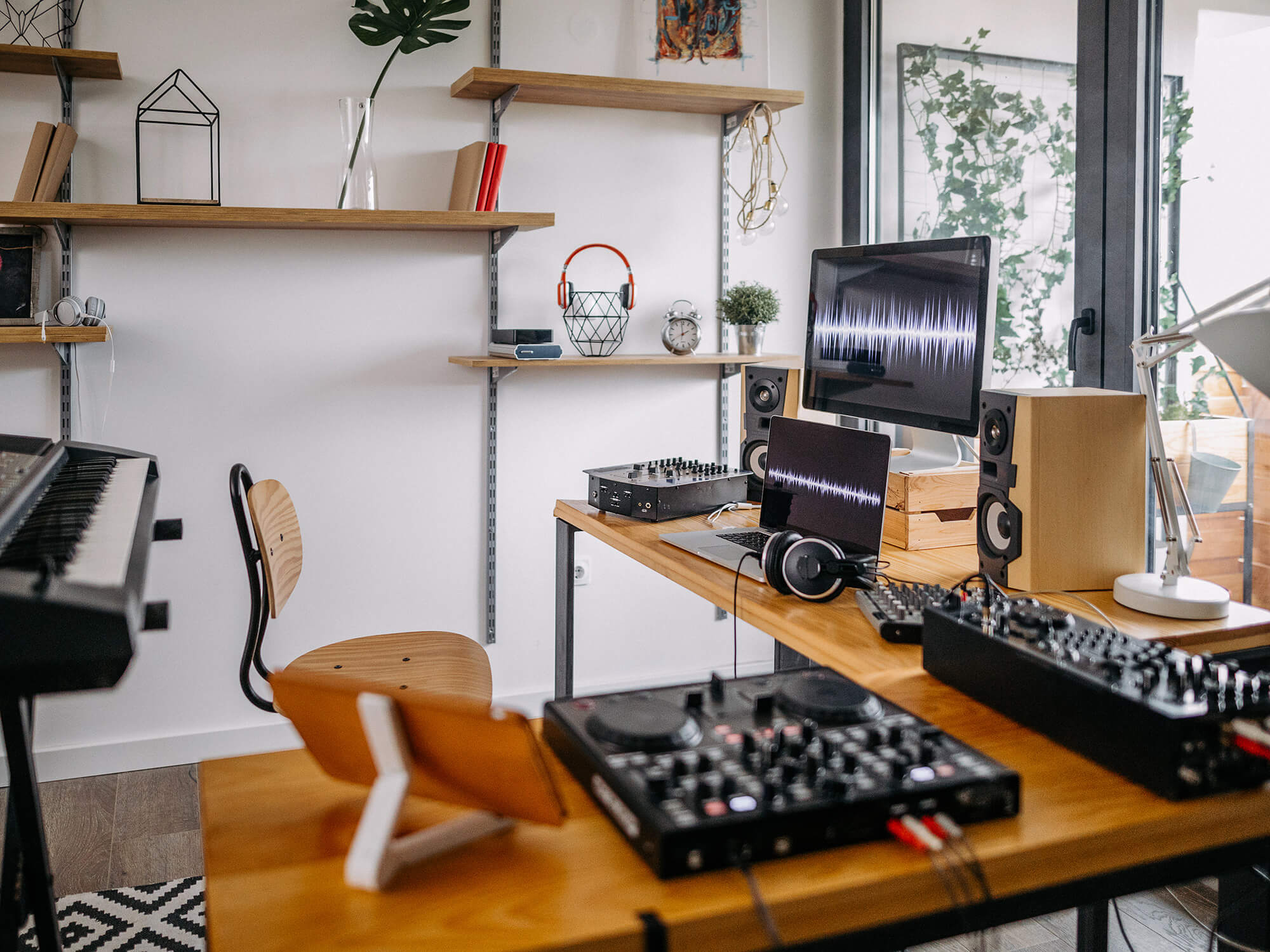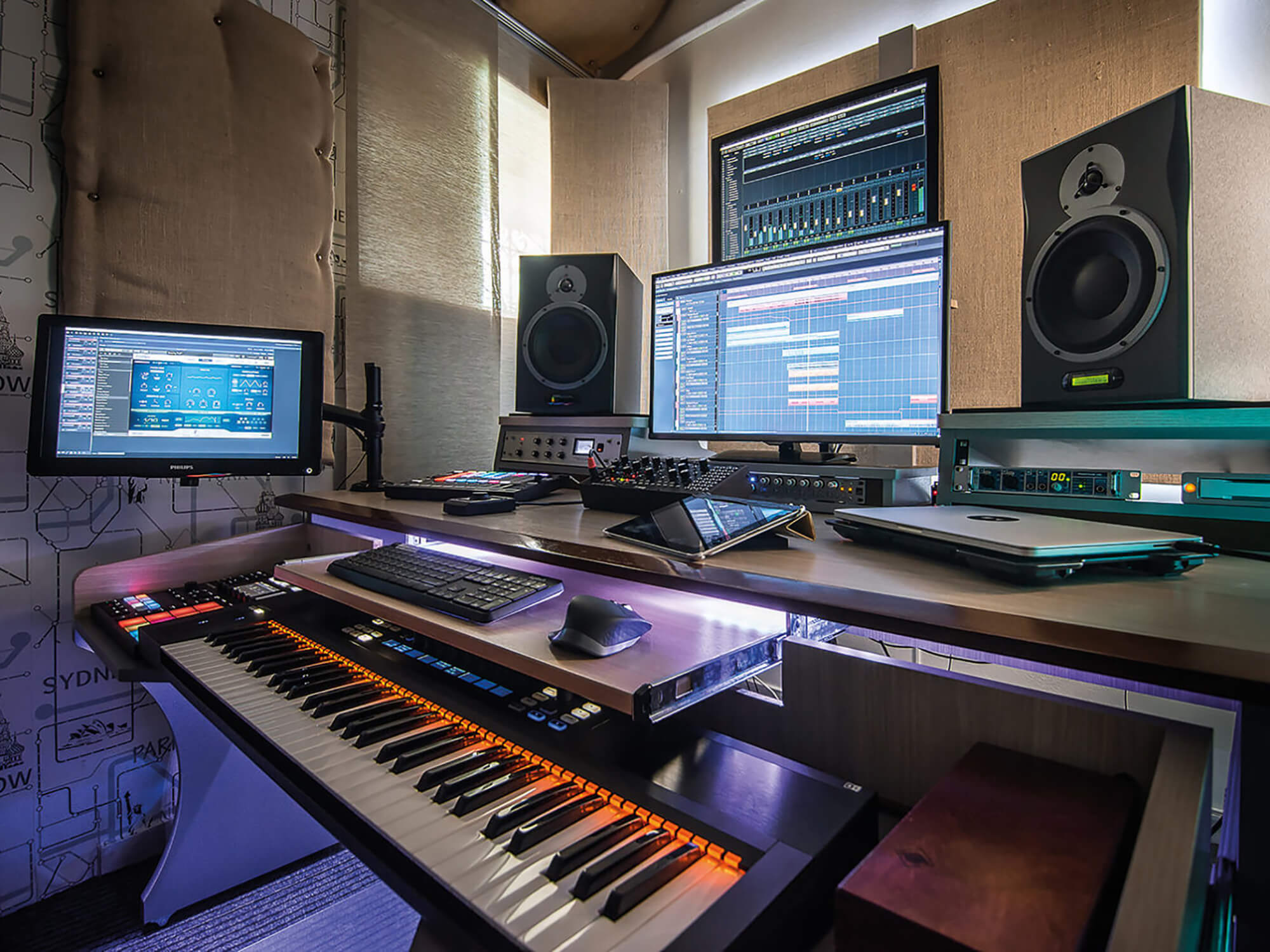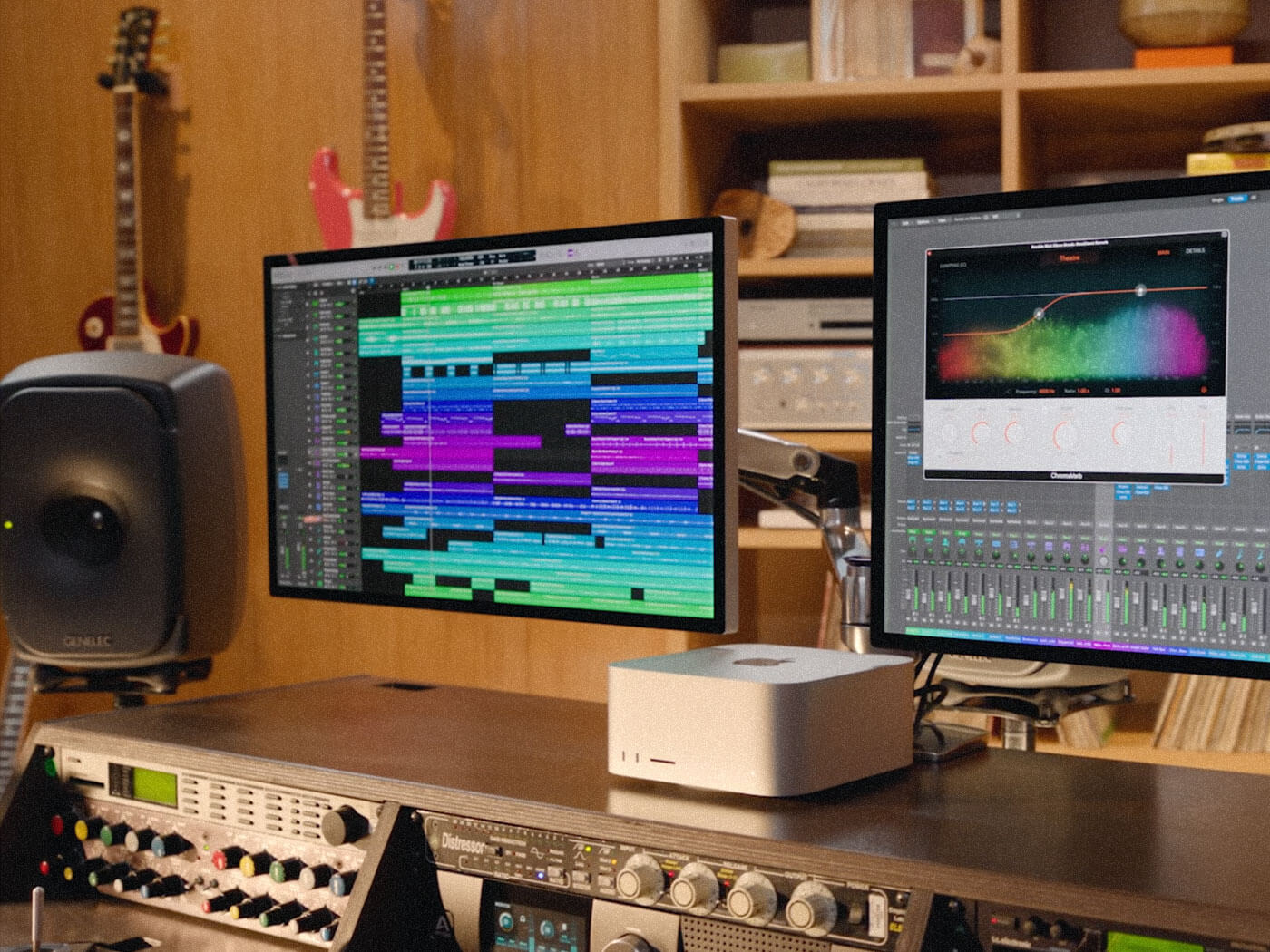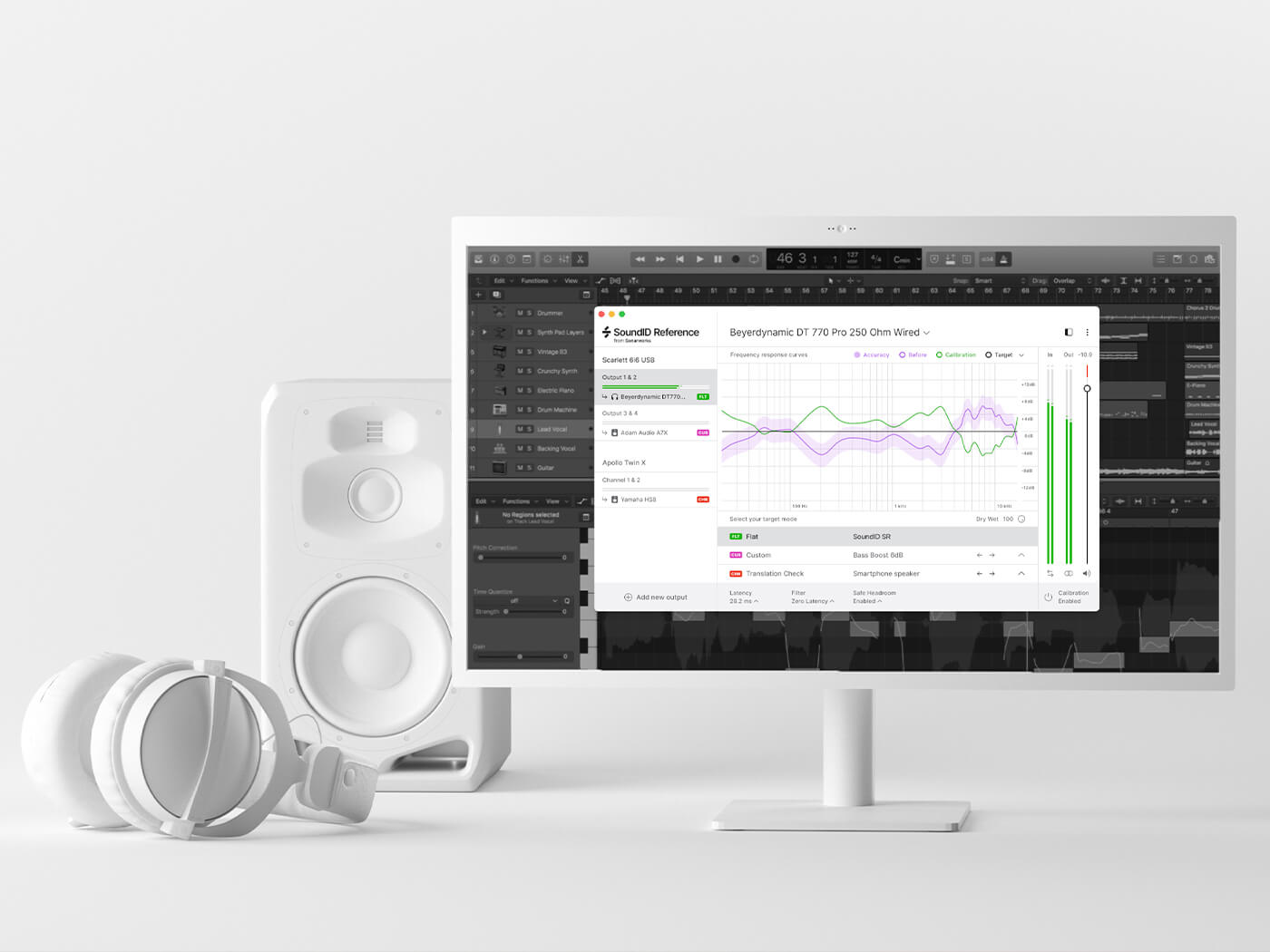How to monitor accurately in a bedroom studio
We tell you all about setting up your monitors in an equilateral triangle, the 85dB rule and room correction software.

Image: Getty Images
Without accurate monitoring, you’ll struggle to make critical decisions when recording, editing and mixing your music. We’d all love to work in a treated room but few of us have that luxury. Most of us start our careers in bedrooms or some other makeshift space. Thankfully there are affordable monitoring tools out there, including room-correction software and DSP processing in monitors, as well as free solutions.
You can spend as much or as little on a space as you want but, by making smart decisions in the set-up phase, you’ll be better placed to make more accurate critical listening decisions later on, which should stop you having to correct problems and keep you focused on the task at hand. First and foremost, the positioning of your monitors is a critical part of accurate playback.

Equilateral triangle
By setting up an equilateral triangle with you at one point and your speakers at the others, you’ll create a balanced environment with its own listening sweet spot. Position yourself wherever you’re comfortable at a desk and place your monitors at equal distances from your ears, aiming the speakers so that they follow the line of measure. A handy way to do this is to place a microphone stand where your head would be, and use three equal lengths of masking or painter’s tape to lay out the equilateral triangle, taping two parts to the stand and freeing up a hand to measure the speaker position.
Ideally, your speakers’ tweeters should be at ear level, because high frequencies are easily lost in the room – this should ensure you hear them clearly. The equilateral triangle ensures that the stereo spread of your mix is even and that the left and right signals hit your ears in sync. Set your speakers too wide and they’ll blast frequency information beyond your ears so that you won’t hear it; too narrow and the stereo image becomes smeared and unclear.
With your speakers positioned, the next important step is to set your levels.
The 85dB rule
Our ears and brains perceive different frequencies at different volumes. The place they’re the flattest is 85dB, allowing us to get the most out of our speakers and not trick us into thinking there’s more or less of any frequency. Maintaining a constant amplitude level should also prevent you from increasing the volume control and perceiving it as improving a mix. Pay attention to your levels using a dedicated SPL reader or meter, or one of the many free smartphone apps on the market.
To contradict this idea entirely, the dim test is another quick way to double-check that your mix is progressing nicely and will translate to different systems. Most monitor controllers have a dim switch, which lowers the volume by a preset amount. Lowering your volume drastically can not only help reset your ears but also allows you to quickly hear whether any one element is too loud in a mix.
Stripped of the frequencies only audible with increased volume, the dim test will quickly expose your work. When pulling the volume back up to 85dB after making adjustments, the mix should feel more balanced and cohesive. The same reasoning applies for the car test – it’s crucial to check your mix in a variety of environments.

Checking your mix elsewhere
The car test is scary, not just because of how often people listen to music in cars but also how quickly cars can expose your bottom end. Is your mix too thin or too thick in the bass? Expect the issue to be exaggerated in the car. Listening to a mix in a car is a common test – we’ve even heard of engineers hiring Ubers for a lap around the block just to trial theirs.
Grammy-winning audio engineer Dave Pensado uses another trick: he leaves the room. Similar to the dim test, leaving the room will help highlight problem areas in the mix very quickly, while also resetting your ears and preventing you from focusing too much on specific sounds and tones. While the dim test focuses on the high end and mids, leaving the room will block out all the highs and force you to focus on only the mids and lows that are making it through the wall. Returning to work will have you hearing your mix with a fresh perspective.

Room correction software
Finally, there are some paid products available to help you get the most accurate reading from your monitors in any room. Room-correction software is, in short, audio processing applied to your monitors to fix the peaks and troughs in their frequency spectrum. This doesn’t just apply to EQ. More advanced (and expensive) room-correction software can even address phase and stereo spread issues caused by sound bouncing from the walls back to your ears and speakers.
Sonarworks is one of the most well-known names in room correction, with its packaged deal of software and calibration mic making for an affordable and professional-quality product. The Sonarworks software allows you to play a frequency sweep through your speakers, while the included microphone measures the frequencies affected by your room and adjusts them.
The more you invest, the better quality you’ll get. The Trinnov ST2 stereo optimiser is one of the best room-correction tools on the market. It features frequency and time-correction technology, analyses the data gathered from frequency sweeps to better time-align your left and right speakers, and positions you into a sweeter spot than a tape measure and masking tape can, while also adjusting for phasing issues occurring between your speakers.

Think about it
There are few things scarier than sending off a mix and realising that you’ve overlooked some jarring whistle or rumble because you were hyper-focused on another element. Take heed of these tips and keep your ears fresh and you’ll have a fighting chance of catching those defects early on.
One last piece of advice? Sleep on it. Taking a break from your mix, either overnight, for lunch or by using the dim trick to reset your ears, will work wonders in helping you deliver a timely mix. You wouldn’t want any sonic problems distracting from your otherwise perfectly crafted snare, would you?
For more guides, click here.